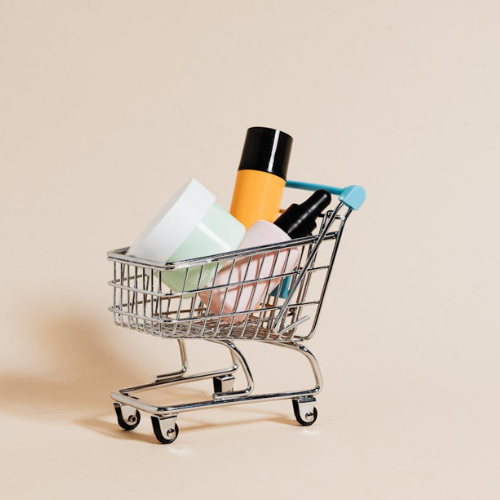
According to the Bureau of Labor Statistics, in 2019, the average American household spent a total of $63,036 throughout the year. This includes everything from housing, to food, to all other purchases. All of this money is going to companies with their own mission statements and goals.
“Vote with your dollar” is a saying used to convey the importance of your consumer decisions. By purchasing from a company, you are telling that company that you are content with what they are doing and to keep up the good work.
I would like to provide you with some tips on how to take a serious look at the company and their products to help verify that your purchasing decisions are within your values. Throughout this article I will be focusing on goods provided by a company, but feel free to take these tips and apply them to companies that provide services as well. We can be a part of the solution to help companies do the right things.
Here are the tips we will cover:
- Consider your Values
- Look Beyond the Packaging
- Find Tools to Help
- Acknowledge the Grey Areas
Consider your Values
It is hard to jump into making the right decisions if you don’t know what is important to you. Take some time to reflect on what bothers you in the world. (Try not to go too far down that black hole though.) The world needs help in many ways, focus on the ones that mean the most to you.
Potential issues that might be important to you:
- Lack of necessities for parts of the world
- Water and air pollution
- Carbon pollution
- Lack of healthy food options
- Social injustices
- Waste Stream
- Microplastics in our environment
- Unsafe and underpaid working environments
- Declining animals and insect populations
Look Beyond the Packaging
Greenwashing is a type of marketing that is used to make a company look more environmentally conscious than it is. Just because the packaging is green and white or has imagery of nature doesn’t mean it is a good for you or the planet. It is okay to be suspicious of something that looks like it is good for the planet. In fact, many brands working to be sustainable go with very simplistic and bland packaging, which is better for the environment. Overall, try not to decide purely based on looks. “Don’t judge a book by it’s cover.”
The number of buzzwords on products are astounding. You basically need to research every word on the packaging to know what it is actually saying. If you start diving into the greenwashing on the food side of things, it gets even more controversial and confusing. Here, I am going to touch on two common buzzwords to give you an example of how terms can be misleading.
Compostable: This term means, in the right conditions, this product can be broken down and will release nutrients into the soil. If you don’t compost the product, it will not have any added benefit to the planet. If it goes to a landfill it cannot properly compost.
It is also important to note that some types of compostable products cannot be composted successfully using personal home composting methods, it must be sent to a special facility that does industrial composting. Industrial composting sites can be difficult to find if you don’t live near a large city.
Composting at home does have a learning curve and is not always an option for everyone. Unfortunately, composting is also not a common practice currently for the average household or company.
Biodegradable: This term means they degrade naturally in the right conditions if left out in nature. Unlike a compostable product, it does not give any added benefit to the soil upon degrading. Biodegradable products cannot degrade in a landfill due to lack of oxygen.
There are no regulations on using the term “biodegradable”. There is no timeframe it must degrade naturally in the environment by. Biodegradable just claims that it is faster than other similar products in degrading.
In researching how to properly dispose of biodegradable products, it is recommended to check if there is an industrial composting facility or biogas facility that can take your waste in your area. Where I live, there is no local place to send these materials. When this is the case, it is recommended to throw it in the trash, which then it cannot properly breakdown in the landfill.
If you look for words like compostable, biodegradable, organic, fair-trade on packaging, spend some time educating yourself on those terms. Sometimes the term will actually end up meaning something completely different than what you thought. Othertimes you may find that the product isn’t actually doing what it is claiming to do.
Use Tools to Help
There is only so much time in the day. I recommend finding resources to help you narrow down what products meet your values. If there are certifications, people, or companies you trust, look to them for recommendations. I encourage you to still put some thought into the company yourself, but it doesn’t hurt to have some help.
Here are some tools that I use:
- Looks to help identify companies that balance purpose and profit.
- Certified B corporations focus on these impact areas: Governance, Workers, Community, Environment, and Customers
- I like that this type of certification doesn’t focus on a single component of business. It takes into account all the ways a company affects it’s surrounding community.
- Examples of Certified B Corporations: Ben & Jerry’s, Allbirds, Klean Kanteen, Patagonia, nimble
- This certification confirms a company is giving 1% of their profit of that product line, brand, or possibly whole company to 1% for the Planet.
- 1% for the Planet is an organization that takes those donations and applies them to heavily vetted environment nonprofit organizations.
- 1% for the Planet divides up their donations to help with 6 core issues: Climate, land, water, food, wildlife, and pollution.
- Because I am passionate about the health of our planet, I like to see when other companies feel the same way.
- Examples of 1% for the Planet Corporations: Boxed Water, Patagonia, Honest Tea, OXO, and Bank of the West
- EarthHero only sells products from other vendors that meet their set standards on environmental requirements.
- They are carbon neutral on all shipping and use minimal packaging.
- They list out if a product is vegan, made in the USA, renewable resource, recycled packaging, etc.
- This allows me to identify what is important to me and then make my purchase. I trust Earthhero to give me good options when I need to purchase everyday items. Not to mention, they themselves are a 1% for the Planet company.
Acknowledge the Grey Areas
Deciding to choose to spend your money with companies you believe in can feel pretty good. You put in the work to educate yourself and you are putting your money in the hands of companies working hard to do what is right. Don’t sell yourself short! If you like to dance, now would be a good time to whip out the sprinkler move or the shopping cart move. Just me doing those moves…alright moving on.
I think it is important to realize that while a lot of good comes out of educating yourself, it can also feel a little bleak at times. I have you on a roller coaster of emotions right now, hang on.
The world is complex, we have been doing things wrong for a long time. We will unfortunately continue to do things wrong. Some companies are going to fool us on doing good. Some companies will succeed on doing good things. Most companies will fall in the middle. When this happens, don’t give up and just make the best decision you can at the time.
Let’s do an example with Joe. Joe doesn’t like the amount of plastic in the environment and works to limit his amount of plastic anyway he can. Imagine Joe runs into a gas station to grab something to drink for the road after forgetting his water bottle. Water only comes in plastic, so he decides to pick something else. He is faced with what type of packaging: aluminum, plastic, glass, or Styrofoam. Joe decides on glass. Glass is the heaviest option, so it isn’t great for the environment in transportation costs, but to Joe, it is better than the other options. There are now about 10 items left to choose from made of glass. Joe purchases Honest Tea, it is part of the 1% for the Planet and Fair Trade. However, Joe knows that Honest Tea is a brand of The Coca-Cola Company, one of the largest plastic contributors in the world. Joe leaves with his drink feeling conflicted on if he made the best choice.
There are going to be times when it feels like there is no good choice. Many factors go into your choice for a product from cost, convenience, values, aesthetic, longevity, and many more. When you run into situations where there is no good choice, make the best choice for in the moment.
Overall, making good purchasing decisions can be confusing and overwhelming. Educating yourself and making purchases from companies you believe in can do a lot of good. Do the best you can within your means.
Be kind to yourself and the planet.
Resources:





One thought on “Vote with your Dollar: An Environmental Perspective”
Thanks for the great information!